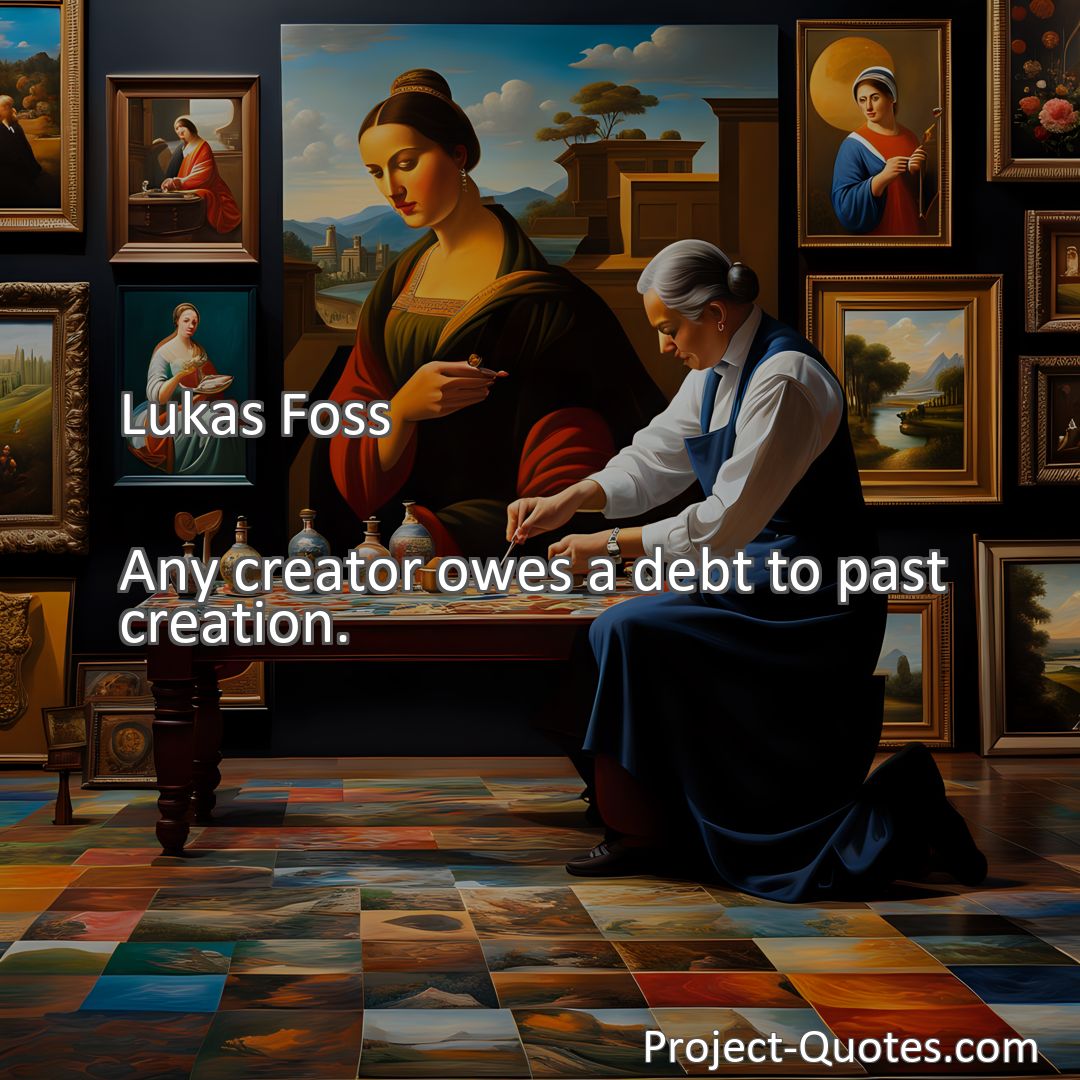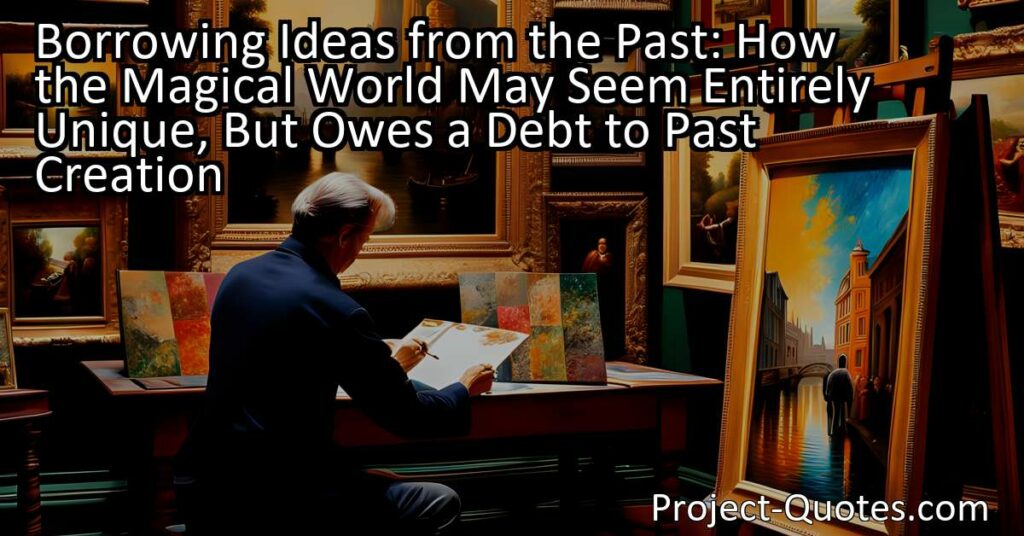Any creator owes a debt to past creation.
Lukas Foss
Borrowing Ideas from the Past: How the Magical World May Seem Entirely Unique, But Owes a Debt to Past Creation Every creator, including authors like J.K. Rowling, owes a debt to past creations, even in the magical world they create. Rowling’s “Harry Potter” series may seem entirely unique, but it is clear that she draws inspiration from the works of fantasy literature giants like J.R.R. Tolkien and C.S. Lewis, allowing her to build upon their foundations and create a captivating world of her own.
Table of Contents
Meaning of Quote – Any creator owes a debt to past creation.
Have you ever looked at a piece of art, listened to a song, or read a book and wondered where the creator drew inspiration from? Well, the truth is, every creator owes a debt to past creation. This powerful quote by Lukas Foss encapsulates the idea that no creation happens in isolation; it is built upon the foundations laid by those who came before.
When we think about creation, it is easy to imagine artists, musicians, and writers working in their studios, grasping ideas out of thin air. However, this romanticized notion doesn’t tell the full story. Every creator is influenced by their surroundings, experiences, and most importantly, the works of art that have come before them.
In the world of literature, this debt to past creation is evident in various ways. For instance, let’s take a look at William Shakespeare, often considered one of the greatest playwrights in history. Shakespeare’s plays, such as “Romeo and Juliet” and “Hamlet,” were not entirely original ideas. Instead, he borrowed plots, characters, and even entire storylines from earlier works. Shakespeare’s debt to past creation is evident in the foundations he built upon, adapting and reinventing stories to create his own masterpieces.
Likewise, modern authors continue to draw inspiration from the works of their predecessors. Take J.K. Rowling, the talented author behind the beloved “Harry Potter” series. While Rowling’s magical world may seem entirely unique, it is clear that she owes a debt to past creation. The influences of fantasy literature such as J.R.R. Tolkien’s “The Lord of the Rings” and C.S. Lewis’ “The Chronicles of Narnia” can be seen throughout the pages of Rowling’s books. By relying on the groundwork laid by these literary giants, Rowling was able to create a new and captivating world of her own.
In the realm of visual arts, the debt to past creation is equally prevalent. From the Renaissance masters to the modern-day artists, each painter and sculptor has been influenced by the works of those who came before them. For instance, if we examine the works of Pablo Picasso, we can see that his art was heavily influenced by African masks and Iberian sculptures. Picasso acknowledged this influence, once stating, “Good artists borrow, great artists steal.” Picasso understood that art is a continuous conversation with the past, and by incorporating elements from previous creations, he was able to develop his unique style, ultimately becoming one of the most influential artists of the 20th century.
The music industry also thrives on this idea of indebtedness to past creation. Composers, musicians, and songwriters have always been inspired by the works of their predecessors. From Ludwig van Beethoven to The Beatles, music has evolved and grown by building upon the foundations laid by those who came before. For instance, The Beatles, one of the most influential bands in history, were heavily influenced by artists like Chuck Berry and Little Richard. The band took inspiration from the rhythms, melodies, and lyrics of these earlier musicians, transforming them into their own iconic sound. In this way, The Beatles epitomized the idea that every creator owes a debt to past creation.
It is important to note that owing a debt to past creation does not mean simply replicating or copying what has been done before. True creation involves transforming and reinventing the ideas, themes, and styles that have come before. Creators are inspired by the past, take what resonates with them, and infuse it with their unique perspective, experiences, and creativity to produce something new and fresh.
This concept of indebtedness to past creation extends beyond the realm of famous creators. It is present in our everyday lives as well. For example, think about the way we communicate. We owe a debt to past creation when we write a letter or send an email, using a language that has been developed and refined over centuries. Similarly, even in everyday conversations, we often borrow phrases, expressions, and ideas from others. This borrowing and influencing from past creation is what allows culture to evolve and flourish.
In conclusion, Lukas Foss’ quote, “Any creator owes a debt to past creation,” accurately captures the essence of artistic, literary, and cultural development. No creation happens in a vacuum; every creator is influenced by those who came before them. Whether in literature, visual arts, or music, the works of the past provide a foundation upon which new creations can be built. This debt to past creation is not about copying or replicating, but rather about borrowing, adapting, and transforming ideas to produce something unique and meaningful. So, the next time you see a piece of art, listen to a song, or read a story, remember that within every creation lies a debt to past creation.
I hope this quote inspired image brings you hope and peace. Share it with someone who needs it today!


